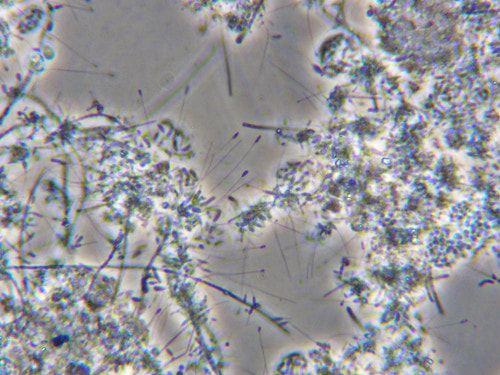So why do we commonly see Hyphomicrobium in systems without methanol in their influent? Stepping back and looking at the microbial community can give us the answer. Influent wastewater contains a big mix of organic and inorganic compounds. No one organism grows on all these compounds. Instead, we have an interaction among thousands of microbial forms. For example, a Pseudomonas may convert an insoluble fatty acid (grease) into soluble short-chain fatty acids which is a byproduct of their metabolism. Instead of short-chain fatty acids building up, bacteria such as Hyphomicrobium and Paracoccus begin to grow on this Pseudomonas waste product. This is an example of syntrophy among various organisms. Syntrohphy is also a reason why we cannot identify all microbes in wastewater MLSS using plate counts.
Here are some facts about Hyphomicrobium sp.:
- Aerobic and capable of using nitrate/nitrite as an alternative electron acceptor
- Uses methanol and other short-chain alcohols as a carbon source
- Under anoxic conditions Hyphomicrobium is a high rate denitrifier
- Biphasic life cycle – flagellated swarm then sessile where we see the stalk
- Studies have found the following pathways in various Hyphomicrobium isolates
- Degrade PAH
- Dichloromethane
- Formaldehyde
- Dimethyl sulfide & methanethiol oxidizing sulfide portion
- Amines (MEA, DEA, TEA)


 RSS Feed
RSS Feed